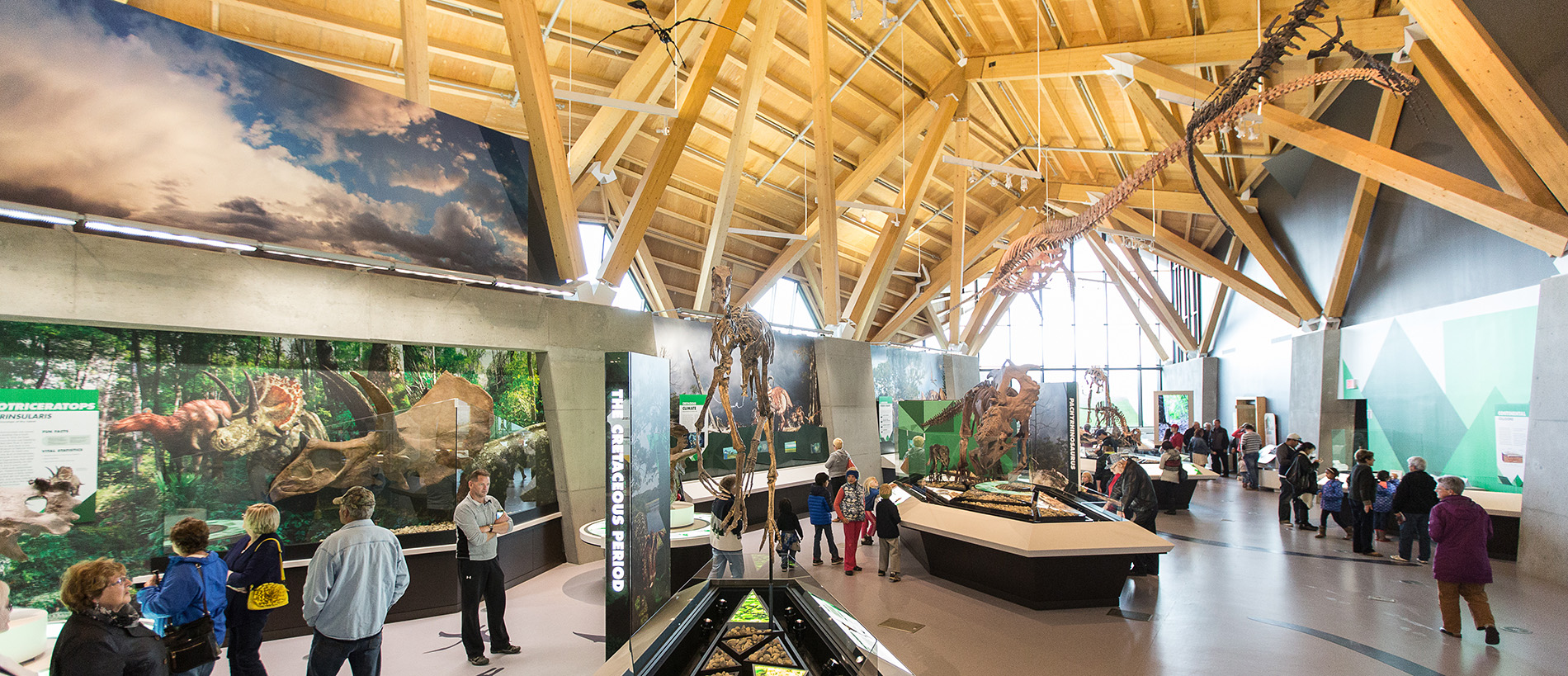What Does It Take to be a Palaeontologist?
Summer Discovery at Philip J. Currie Dinosaur Museum
CNW (Grande Prairie, Alberta, Canada)
The Philip J. Currie Dinosaur Museum is all about making the dinosaur world accessible to people of all ages, including little people. “The museum uses augmented reality platforms and fractal screens to bring to life animated dinosaurs in interactive ecosystems akin to “chase” scenes coursing through galleries that descend into the earth. The exhibit experience offers a window into a 360 million year journey that feels as if visitors are a whisper away as these prehistoric giants roam through the museum”, says George Jacob, President & CEO of the award winning museum.
Curious Critters, designed for 4-6 year olds, teaches about dinosaurs through storytelling and crafts. For children ages 7-12, So you want to be a palaeontologist? teaches some of the skills needed to discover dinosaurs. Children learn about fossils, casts, molds, and other tools to solve the many mysteries of the field – with a lot of fun in the mix.
The summer weekend Bone Bed Tours to nearby Pipestone Creek, which has one of the densest dinosaur bone beds in the world, paints the picture of life in the Cretaceous Period 75 million years ago. Tour participants examine real fossils and learn about the different types of dinosaurs found in Northern Alberta and the forces that affected the exposed rocks in which we find remains. The tour includes information on the Pachyrhinosaurus lakustai species that is unique to this area, what they ate, and clues to piece together theories of how hundreds of dinosaurs may have died in one spot and who came after to feed on them.
Tiny Titans: Dinosaur Eggs and Babies provides glimpses into breeding and dinosaur propagation. The traveling exhibit developed jointly with Harvard, Yale and University of Tennessee includes not just eggs, but also the embryonic bone formations of tiny hatchlings. This remarkable hands-on exhibition includes an amazing collection of dinosaur eggs and nests collected from all over the globe – including those of each of the major plant and meat-eating dinosaur groups. How did these adorable creatures grow into scary giants that develop horns, claws, crests and teeth?
This summer, in addition to 8 new exhibits, the museum will unveil casts of some of the 10,000 dinosaur tracks that mark the Grande Cache coal mine site.
Located off the Alaska Highway #43, just 18 kilometers west of Grande Prairie Airport, the museum also offers hotel packages; Dinobus tours; helicopter tours with interactive tablet computers, inclusive of audio guides, to remote fossil sites in the surrounding area; lecture series and distance education.
Designed for high school students, the distance education programs include videos that explain fossilization processes, audio files, diagrams, and quizzes. The museum provides an instructor who will be available for questions and answers after the students have viewed the materials with their teacher.
ABOUT PHILIP J. CURRIE DINOSAUR MUSEUM
Philip J. Currie Dinosaur Museum is an international institute for experiential learning dedicated to Alberta’s palaeontological heritage through research, collection, preservation, exhibition, public programming, publications and innovative outreach. Canada’s newest world-class museum features the latest interactive technology and exhibit experiences, state-of-the-art palaeo lab, Canada’s only National Geographic partnered theatre, the only Helicopter rides over the world’s densest bone-bed site and award-winning architecture. For more details, visit www.dinomuseum.ca.
MEDIA CONTACT
Nora Weber, TerraCom
778-823-0040
[email protected]











